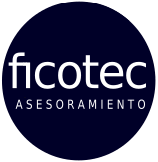The
IRPF
is one of the basic pieces of the
Spanish tax system
. It is a
tax,
a financial benefit demanded by the State, which citizens are obliged to pay and for which they do not obtain any specific consideration
in return
.
The main purpose is to respond to the principle established by the Spanish Constitution that all Spaniards must contribute to the support of the public expenditures.
It is paid by
individuals
residents
in Spain. A person is considered to be resident in Spain if he/she lives most of the time in Spain, regardless of his/her origin or nationality. Legal entities (companies, communities, …) pay the Corporate income tax.
Personal income tax is levied on the income for the financial year. It includes three different ways of obtaining income: 1) Income from work, which is the income obtained by employees. and pensioners2) Income from capital, both movable (e.g. dividends from shares) and real estate (income obtained from renting a property); and 3) Income from economic activities, which is the income obtained by small entrepreneurs, freelancers and liberal professions. It should be added that in some cases, the law itself imputes the existence of an income in the financial year.
It is not only income obtained in cash that is taxed, but also income in kind.
income in kind
s. For example, if a company pays its workers by offering them some goods or services instead of money, this service or good will be subject to personal income tax. If a bank gives us “a set of saucepans” for making a deposit, this set of saucepans is a return on our capital and is taxed with IRPF.
For the computation of the tax, the income obtained can be reduced by the following deductions
necessary expenses
to generate them. For example, social security contributions are necessary to obtain salaries, membership fees are necessary for the professional practice, …
The IRPF tries to adapt to the personal and
personal and family circumstances of individuals
. There are
tax relief
for the elderly, the disabled, those with children, etc.
The taxable base, simplifying a lot, would be the balance resulting from calculating PROFITS minus DEDUCTIBLE EXPENSES and DEDUCTIONS for personal circumstances. A progressive levy is applied to this “balance”.
|
Table of PERSONAL INCOME TAX RATES |
||
|
TAXABLE BASE |
Retention 2017 |
|
|
From |
A |
|
|
0,00 € |
12.450,00 € |
20% |
|
12.450,00 € |
20.200,00 € |
25 % |
|
20.200,00 € |
35.200,00 € |
31 % |
|
35.200,00 € |
60.000,00 € |
39 % |
|
60.000,00 € |
– |
47 % |
As we can see in the table, the brackets are applied progressively. On a taxable base of 25,000 euros, the first 12,450 euros will be taxed at 20%, the following 7,750 euros up to 20,200 euros will be taxed at 31% and the following 4800 euros will be taxed at 31%. No 31% would apply to the total.
E
he Personal Income Tax (IRPF) is
a tax partially ceded to the communities
. There are certain differences in terms of tax relief and the rates applied, but within a similar framework. Income obtained in Ceuta and Melilla is subject to special treatment.
On the other hand, in the provinces of
provinces of Vizcaya, Guipuzcoa, Alava and Navarre, there is a separate regime that only applies in each of these provinces.
The way to pay the IRPF can be surprising, in order not to pay it all at once, the rules require the payers of the income that
withhold and pay certain amounts on account of personal income tax.
to be paid to the collectors of such rents. People who carry out economic activities pay certain amounts on account of tax on a quarterly basis before filing their income tax return. Once the tax return has been made, if it turns out that a greater amount has been withheld than is due, the right arises for the tax authorities to
return the excess
.

